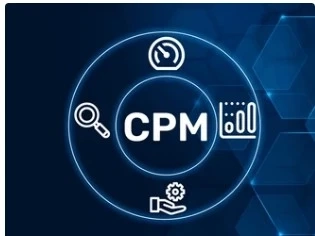In today's digital era, cloud computing has become the backbone of modern enterprises, offering scalability, flexibility, and cost-efficiency. However, as organizations increasingly migrate their operations to the cloud, ensuring the security of cloud environments has become paramount. Cloud Security Posture Management (CSPM) emerges as a critical solution, enabling businesses to maintain robust security postures across complex cloud infrastructures.
Understanding Cloud Security Posture Management (CSPM)
CSPM refers to a set of automated tools and processes designed to identify and remediate risks in cloud configurations. It continuously monitors cloud environments, ensuring compliance with security best practices and regulatory standards. By providing visibility into cloud assets and configurations, CSPM helps organizations detect misconfigurations, vulnerabilities, and compliance violations in real-time.
The Imperative for CSPM in Modern Enterprises
1. Complexity of Cloud Environments
Modern enterprises often operate in multi-cloud or hybrid cloud environments, utilizing services from providers like AWS, Azure, and Google Cloud. This complexity increases the risk of misconfigurations and security gaps. CSPM tools offer a unified view of cloud security, simplifying management across diverse platforms.
2. Dynamic Nature of Cloud Resources
Cloud resources are highly dynamic, with frequent changes in configurations and deployments. Manual monitoring is insufficient to keep up with these changes. CSPM provides continuous, automated monitoring, ensuring that security policies are consistently enforced.
3. Regulatory Compliance
Enterprises must comply with various regulatory standards such as GDPR, HIPAA, and PCI DSS. CSPM tools automate compliance checks, generating reports and alerts for non-compliant configurations, thus reducing the risk of penalties.
4. Threat Detection and Response
CSPM enhances threat detection by identifying unusual activities and potential breaches. It enables rapid response by providing actionable insights and, in some cases, automating remediation processes.
Key Features of CSPM Tools
- Continuous Monitoring: Real-time assessment of cloud configurations to detect vulnerabilities and misconfigurations.
- Automated Remediation: Automatic correction of identified issues, reducing the burden on security teams.
- Compliance Management: Ensuring adherence to industry standards and generating compliance reports.
- Risk Visualization: Providing dashboards and visual representations of security posture for informed decision-making.
- Integration with DevOps: Embedding security checks into the development pipeline to catch issues early.
Implementing CSPM: Best Practices
- Asset Inventory: Maintain an up-to-date inventory of all cloud assets to ensure comprehensive monitoring.
- Policy Definition: Establish clear security policies and benchmarks aligned with organizational goals and regulatory requirements.
- Regular Audits: Conduct periodic audits to assess the effectiveness of CSPM tools and processes.
- Training and Awareness: Educate teams about cloud security best practices and the importance of maintaining a strong security posture.
Conclusion
As enterprises continue to embrace cloud technologies, securing cloud environments becomes increasingly critical. Cloud Security Posture Management offers a proactive approach to identifying and mitigating risks, ensuring compliance, and maintaining the integrity of cloud infrastructures. By integrating CSPM into their security strategies, organizations can confidently navigate the complexities of the cloud landscape.
The African eDevelopment Resource Centre stands as a regional professional ICT and telecom management learning centre for Africa, dedicated to empowering professionals with the knowledge and tools necessary to excel in the evolving digital landscape.



